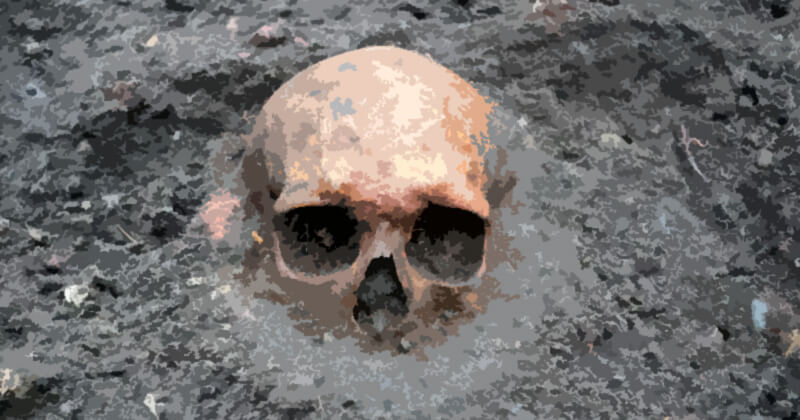Content Warning: This article contains graphic descriptions of the decomposition process. It may not be suitable for all readers.
Whether you’re worried about the funeral, or just plain curious. I understand.
Typically, after two weeks a dead body will look slightly bloated compared to how it looked at the time of death. If the deceased was embalmed, visual changes are likely to be minimal. If the body was not embalmed or kept in a cool and dry place, the skin may have developed a blue-greenish hue.
Giving a more definitive answer is difficult because there are so many factors that affect the rate and way in which a dead body decomposes.
However, in this article I will try my best to give you an accurate idea based on extensive research. Read on to learn more about:
- What a dead body looks like after two weeks
- The impacts of embalming
- What a dead body looks like beyond that
- The stages of decomposition
- Factors that affect the rate of decomposition
Note: We won’t be hosting images of decomposing bodies on our site. However, these are easily found on Google images and elsewhere on the internet if that’s what you are looking for.
In This Article
Stages of Decomposition
The decomposition timeline begins immediately after death.
If the body is not embalmed, it typically plays out as follows:
- During the first stage of decomposition, known as autolysis (~2 days), the bacteria that were once kept in check by the immune system begin to break down cells within the body.
- Next is bloat (2 – 12 days), where anaerobic bacteria release gases that cause swelling. If the body has not been kept in appropriate storage, insects like flies may have laid eggs in the body, and it will likely give off a bad smell.
- Active decay (12 – 36 days) is when enzymes within your own digestive tract begin really eating away at the body. This stage continues into advanced decay (which usually starts around 20 – 42 days).
Eventually, the flesh will have been broken down leaving only skeletal remains.
Related Article: What Happens to a Body in a Coffin? [Decomposition Timeline]
What Does a Dead Body Look Like After Two Weeks?
After two weeks a dead body will likely have began the bloat stage of decay, if not the active stage.
If the body has not been embalmed, putrefaction may also have begun to take place resulting in skin discoloration. It may appear green or black due to bacterial activity, and there may be white film over eyes.
In an especially hot, humid, and uncontrolled environment, a dead body may have undergone significant physical changes due to insects eating at the flesh. This can even render identification difficult.
You can get an example of what this looks like in this image of the decomposition of a pig, here [Warning: The images in that link are graphic and disturbing].
Of course, in most cases before a funeral a body will be embalmed or kept in a cool dry place, and this has an impact on how the body will look:
What Will It Look Like At A Funeral? (Impacts of Embalming)

Embalming is a process used to preserve a dead body and delay the decomposition process. This treatment involves draining the bodily fluids, then replacing them with chemicals (like formaldehyde).
Thankfully, except for some minor bloating like in the image above, an embalmed body will typically look much like it did at death for several weeks. The skin may appear slightly waxy or rubbery in texture, but otherwise should not show any signs of decomposition.

Bodies professionally refrigerated shortly after death usually decompose in a similar, delayed, way – although I wouldn’t expect the skin to be waxy – that’s likely attributable to the embalming process.
This doesn’t last forever though. According to historian Norman L Cantor in his book, After We Die: The Life and Times of the Human Cadaver:
“Typical embalming for a funeral seeks to protect the corpse from putrefaction only for a matter of days or weeks. The object is to buy time for visitation and disposal during the several days following death. Thereafter the [embalming fluid] breaks down and bacteria begin to do their work.”
What Factors Affect How a Dead Body Looks
As previously mentioned, many factors can influence how a dead body looks after two weeks.
Beyond whether the body was embalmed, these factors include:
- Temperature and humidity. High temperatures and humidity speed up the process while lower ones slow it down.
- The presence of insects and other animals also affect the physical appearance of a decomposing body. Insects like flies, maggots and beetles can cause significant damage to skin tissue by feeding on the flesh.
- Naturally, specific health conditions or injuries sustained by an individual prior to death may also result in differences in their appearance during decomposition.
What Will It Look As It Decomposes Further?
As time goes on, the physical appearance of a decomposing body will naturally continue to change.
After a Month?
After one month, the body will have progressed solidly into the advanced decay stage.
At this point, there may be large amounts of fluid (liquefaction) and gas build-up causing further bloating, swelling, and discoloration throughout the corpse. The deceased’s nails and teeth will likely begin to protrude.
After a Year?
As a year approached, only bones and some connective tissues like tendons and ligaments are likely to remain. In some cases a black sludge will lay under the body and slowly dry out.
This process typically takes around 12 -18 months, but can vary depending on various factors such as weather conditions or location where the body was left.
The Bottom Line
The above may sound grim, the key facts are that after two weeks, an embalmed body will typically look like it did at death while an unembalmed one may exhibit bloating and skin discoloration.
However, every decomposing body is unique in its decay process due to various factors such as temperature, humidity levels, and insect activity.











